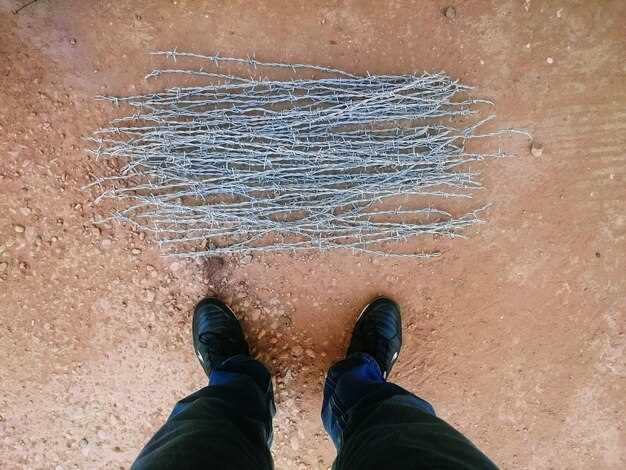
In modern electrical systems, ensuring proper ground connections is critical for maintaining functionality and safety. Poor ground connections can lead to a multitude of issues, ranging from equipment malfunctions to hazardous electrical situations. Understanding how to identify these deficiencies is essential for electrical professionals and DIY enthusiasts alike.
The grounding system serves as a reference point for voltage stability and helps to protect both the users and the equipment from electrical faults. When the ground connections are compromised, it can result in an increased risk of electrical shock, equipment failure, and even fire hazards. Therefore, recognizing the signs of poor ground connections is key to preventing these potential dangers.
In this article, we will explore the common indicators of inadequate ground connections, the methods for diagnosing issues, and best practices for ensuring a robust grounding system. By following these guidelines, you can help safeguard not only your electrical systems but also the people who depend on them.
Common Symptoms of Grounding Issues in Electrical Equipment
Grounding issues in electrical equipment can manifest through various symptoms, indicating that the system may not be operating safely or efficiently. One common sign is frequent tripping of circuit breakers. This occurs when there is an unexpected electrical fault, often linked to inadequate grounding. When equipment lacks proper grounding, it can lead to overloads that disrupt normal operation.
Another noticeable symptom is electrical shock or tingling sensations when touching equipment. This happens when stray voltage or current travels through improperly grounded systems, posing a safety hazard to users. It is essential to address these grounding deficiencies promptly to ensure safe operation.
Additionally, equipment may exhibit erratic behavior, such as flickering lights or fluctuating power levels. These irregularities often arise from poor grounding, which affects the stability of electrical circuits. If machinery operates inconsistently, it could stem from grounding faults that compromise the overall electrical integrity.
Unusual noises from equipment, such as buzzing or humming, can also signal grounding issues. These sounds may arise from electrical arcing or loose connections that hinder the flow of electrical current, emphasizing the need for proper grounding mechanisms.
In some cases, equipment may demonstrate a reduced lifespan due to ongoing grounding problems. Poor grounding can lead to overheating, corrosion, or other damages that significantly shorten the operational life of electrical systems. Regular maintenance and inspections can help identify and rectify these grounding issues before they escalate.
Lastly, the presence of ground fault indicators on equipment is a critical sign of underlying grounding troubles. Many devices are equipped with monitoring systems that detect ground faults and alert users. Adhering to these warnings is vital for maintaining safety and operational efficiency.
Testing Methods for Ground Connection Integrity

Ensuring grounding integrity in electrical systems is crucial for safety and performance. Several testing methods can help identify issues related to ground connections, allowing for timely maintenance and repairs.
One effective method is the use of a multimeter to measure the resistance of the ground connection. By connecting the multimeter leads to the ground terminal and a known good ground point, technicians can assess resistance levels. Ideally, resistance should be less than 5 ohms. Higher values indicate poor connections which may lead to electrical issues.
An alternative approach involves the use of a ground resistance tester, which applies a known current through the grounding electrode and measures the resulting voltage drop. This method provides a more accurate representation of ground resistance in real-time operating conditions, essential for identifying hidden connections that may not be evident through manual methods.
Continuity testing is another fundamental technique that checks the integrity of ground connections. By passing a small current through the ground path and ensuring it returns correctly, technicians can confirm that all connections are intact. Any interruption may signal potential electrical issues that should be addressed promptly.
Clamp-on ground testers offer a non-invasive way to measure ground resistance without disconnecting the grounding system. These devices clamp around the ground conductors and provide a quick, accurate assessment of grounding performance, helping identify problems in live systems without downtime.
Finally, visual inspection should not be overlooked. Examining grounding connections for physical damage, corrosion, or improper installation can reveal underlying issues that testing alone may miss. Regular visual checks are an essential part of maintaining electrical systems’ integrity.
In conclusion, utilizing a combination of these methods allows for a comprehensive evaluation of ground connection integrity, minimizing potential electrical issues and ensuring a safe operational environment.
Steps to Repair and Improve Grounding Systems

Ensuring effective grounding in electrical systems is crucial for safety and functionality. Below are the key steps to repair and improve grounding systems.
1. Inspect Existing Ground Connections: Begin by examining all existing ground connections. Look for signs of corrosion, loose connections, or damaged wires. Pay special attention to connections at service entrances, grounding electrodes, and any intermediary points.
2. Test Ground Resistance: Use a ground resistance tester to measure the resistance of the grounding system. Ideally, resistance should be below 25 ohms. If measurements exceed this threshold, consider upgrading the system.
3. Clean Connections: Remove corrosion from ground connections using a wire brush or sandpaper. Ensure that metal surfaces are clean and free of contaminants to facilitate good electrical contact.
4. Tighten Loose Connections: Check all grounding connections for tightness. Use a torque wrench to apply the manufacturer-specified torque levels to each connection, ensuring a secure bond without damaging components.
5. Install Additional Grounding Electrodes: If the ground resistance is still too high, additional grounding electrodes may be necessary. Consider installing ground rods or plates that comply with local electrical codes.
6. Replace Faulty Components: Identify and replace any components that are damaged or degraded. Faulty grounding wires or terminals can compromise the entire system’s performance.
7. Upgrade Grounding System: As technology evolves, it may be beneficial to upgrade the grounding system. Consider using newer materials or methods that provide better conductivity and durability.
8. Regular Maintenance: Schedule regular inspections of the grounding system to identify any emerging issues early. Consistent maintenance helps ensure long-term reliability and safety.
By following these steps, you can effectively repair and enhance grounding systems, ensuring improved performance of electrical installations and increased safety for users.



